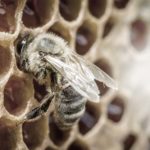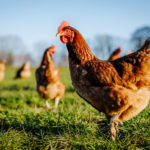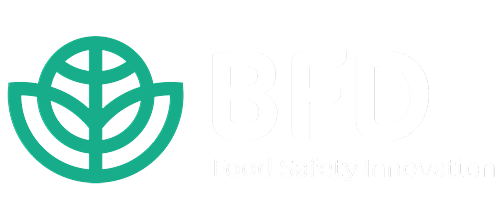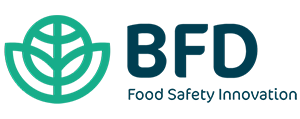
Main Courses: Day 5 – 12 Days of Food Safety
Day 5: Main Courses
12 Days of Food Safety
From Germany’s succulent goose to Cuba’s tender suckling pig, the UK’s classic roast turkey to Ethiopia’s spicy beef stew, meat will be the focal point of many holiday feasts around the world. Yet, despite our love for these traditional main courses, there’s a concerning question that many of us are asking: do we truly know what lurks within our favourite holiday meats?
The global meat sector was assessed to be worth 897 billion U.S dollars in 2021, with a projected rise to 1354 billion U.S. dollars by 2027.1 Brazil, Australia, the USA, India, and Argentina are among the primary exporters of red meat, while Poland, the Netherlands, the USA, Belgium, and Germany rank prominently in poultry exports.2
The use of antibiotics and hormones in meat production is a widespread practice intended to treat diseases and enhance livestock growth. It’s crucial to thoroughly monitor and test these products at every stage of the supply chain to prevent the incorporation of unregulated hormones and antibiotics in the market.
Hormones and Antibiotics
Diverse global drug authorisations in place for the use of these drugs in animal husbandry practices, create challenges for enforcement organisations. Some countries have a complete ban on its use and some still allow its use with an adequate withdrawal periods. Some examples regarding global regulations/restrictions are noted below:-
- Meat producers have utilised synthetic hormones like Clenbuterol, Zeranol, Trenbolone, and Ractopamine for decades to enhance size and promote lean meat growth. However, these have been banned in Europe since the 1980’s due to numerous illnesses linked to Clenbuterol poisoning.3
- In countries such as the USA, Canada, Australia, South Africa, and several others, the production of red meat allows for the use of growth hormones. Regulatory bodies like the FDA in the US currently assigns a zero- day withdrawal period, advising that it’s safe for human consumption at any time after the treatment period.3
- The use of hormones in poultry has been banned in most nations for more than 50 years.4
- Commercial products like Paylean™, a feed additive containing Ractopamine used to increase muscle tissue growth in swine, are readily available for purchase in the U.S.A and various other countries.5
The global variations in regulations have led to deliberations on the Maximum Residue Levels (MRLs) of specific hormones found in meat products in the process of forming international trade agreements. This highlights the crucial need for comprehensive testing at each stage to verify compliance with these regulations.
Globally, antibiotics are frequently employed in treating various illnesses in livestock to improve their health. Nevertheless, there’s a potential for their misuse by producers to stimulate growth. Maximum Residue Limits (MRLs) are established to oversee veterinary-approved antibiotic use in livestock, yet these limits differ based on prescriptions and regulatory authorities. Moreover, each antibiotic necessitates a distinct withdrawal period, ranging from as short as 1 or 2 days to as long as 16 weeks, depending on the dosage and regulatory body.6
You Are What You Eat
Most concerns about growth hormones in meat stem from potential health risks such as hormonal imbalance, heightened cancer risk, early childhood puberty, low sperm count in males, and prenatal developmental issues. Regulatory agencies establish hormone use limits, while ongoing research continues to explore the lasting impact on consumers.6
One of the primary concerns is the development of antibiotic-resistant bacteria due to the widespread use of antibiotics in livestock. While farmers must adhere to withdrawal periods, there’s still a risk of antibiotic residues remaining in meat. These residues, if present in meat consumed by humans, might potentially contribute to the development of antibiotic resistance or cause allergic reactions in sensitive individuals, making bacterial infections harder to treat.6
The Hormone and Antibiotic-Free Solution
Customers are playing a pivotal role in addressing additives in meat and growing consumer awareness has resulted in a heightened preference for meat labelled “hormone-free” or “antibiotic-free.” For example, Perdue Foods in the United States embraced a “no antibiotics ever” strategy in their operations, from egg to adult, in response to heightened customer demand.7 Furthermore, certifications like organic labels and endorsements from reputable producers signify meat products meeting higher standards without these additives.6
However, while veterinary inspections, improved animal husbandry, sample testing, and adherence to withdrawal periods aim to reduce hormone and antibiotic residues in meat, availability of effective testing kits on the market is crucial to ensure adherence to regulations.
BFD Testing Panel
Biorex Food Diagnostics provides selection of immunoassay-based tests tailored for detecting antibiotics and hormones in meat and poultry. Our kits guarantee exceptional precision, dependable results, rapid assay times, and affordability, ensuring customer convenience without compromising quality.
| Antibiotics | Hormones |
| AOZ FAST
BXEFB41A |
Clenbuterol
BXEFB04A |
| AMOZ
BXEFB42A |
Zeranol
BXEF17A |
| AHD FAST
BXEFB43A |
Trenbolone
BXEFT15A |
| Chloramphenicol
BXEFB03A |
Ractopamine v2
BXEFB05A |
| Fluoroquinolones
BXEFB07A |
|
| SEM FAST
BXEFB44A |
Have you missed the previous 12 Days of Food Safety? Not to worry. Click the images below to catch up.
References
- Shahbandeh, M. Global meat products market value 2021-2027. https://www.statista.com/statistics/502286/global-meat-and-seafood-market-value (accessed 28 November 2023).
- Workman, D. World’s Top Exports. https://www.worldstopexports.com/category/countries/ (accessed 28 November 2023).
- Directorate-General for Health and Food Safety. European Commission Food Safety. https://food.ec.europa.eu/safety/chemical-safety/hormones-meat_en (accessed 28 November 2023).
- Berhilevych, O., Chechet, O., Kasianchuk, V., Smiianov, V., Fritsak, M. Ensuring Public Health: Monitoring of Hormone Residues in Poultry Meat. Health Economics and Management Review 2021; (3): https://armgpublishing.com/wp-content/uploads/2021/10/hem_3_2021_19_26.pdf (accessed 29 November 2023).
- Apple JK. The Influence of Paylean (Ractopamine Hydrochloride) on Pork Quality. https://porkgateway.org/resource/the-influence-of-paylean-ractopamine-hydrochloride-on-pork-quality/ (accessed 29 November 2023).
- Sandoiu A. Drug resistance: Does antibiotic use in animals affect human health? https://www.medicalnewstoday.com/articles/323639 (accessed 30 November 2023).
- Perdue Foods. No Antibiotics Ever. https://www.perduefoodservice.com/the-perdue-difference/tiers-of-value/no-antibiotics-ever (accessed 1 December 2023).











